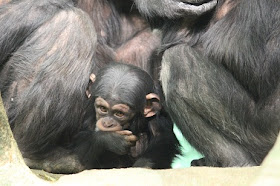Biological monitoring in ZOORASIA YOKOHAMA ZOOLOGICAL GARDENS
I visited ZOORASIA YOKOHAMA ZOOLOGICAL GARDENS to see biological impacts of Fukushima Daiichi nuclear power plant accident. ZOORASIA shows us baby animals who were born there in 2012. So I visit there to see their growth. Generally speaking, animal's growth is faster than human beings, so they are more sensitive to radioactive materials from the environment than us. Fortunately, I saw them grown up safely and I couldn't find any impact of the accident. It seems that there is no problem for childbirth and child-rearing in Kanagawa Japan.
Posted by Yoshitaka Kiriake from Japan on January 14, 2013.
福島第一原発事故による影響を見るため各地を訪問している。よこはま動物園ズーラシアではウミネコ、ニホンザル、チンパンジーなどの赤ちゃんを見ることが出来た。動物の出産や成長は順調で事故による影響は見られなかった。彼らは我々と同じ環境で暮らしており、彼らの健康状態を見ることは重要である。
Babies grow up safely
This baby chimpanzee is 4 months old.
Entrance of
ZOORASIA YOKOHAMA ZOOLOGICAL GARDENS
ACCESS
About ZOORASIA
I met many baby animals at the zoo.
They were born safely last year.
Black-tailed gull and new baby.
Japanese monkeys have new babies too.
They were born last year.
This baby chimpanzee is 4 months old.
She is 1 years old.
This Bush Dog has only one foreleg.
I saw a bush dog who has only one foreleg. There was no relation with the nuclear accident. He lost one foreleg by injury when it was a child.
I ate yummy ice cream at the zoo.
This is the Yokohama Landmark Tower.
It is 296meters high
Night view of Yokohama from it's observation deck.
I am continuing to visit to aquariums and zoos to see the effects of the accident because we can see many kinds of creatures which are sensitive to radioactive materials from the environment. It is important to see their health for our safety.
Public Health
Network in Japan































0 件のコメント:
コメントを投稿